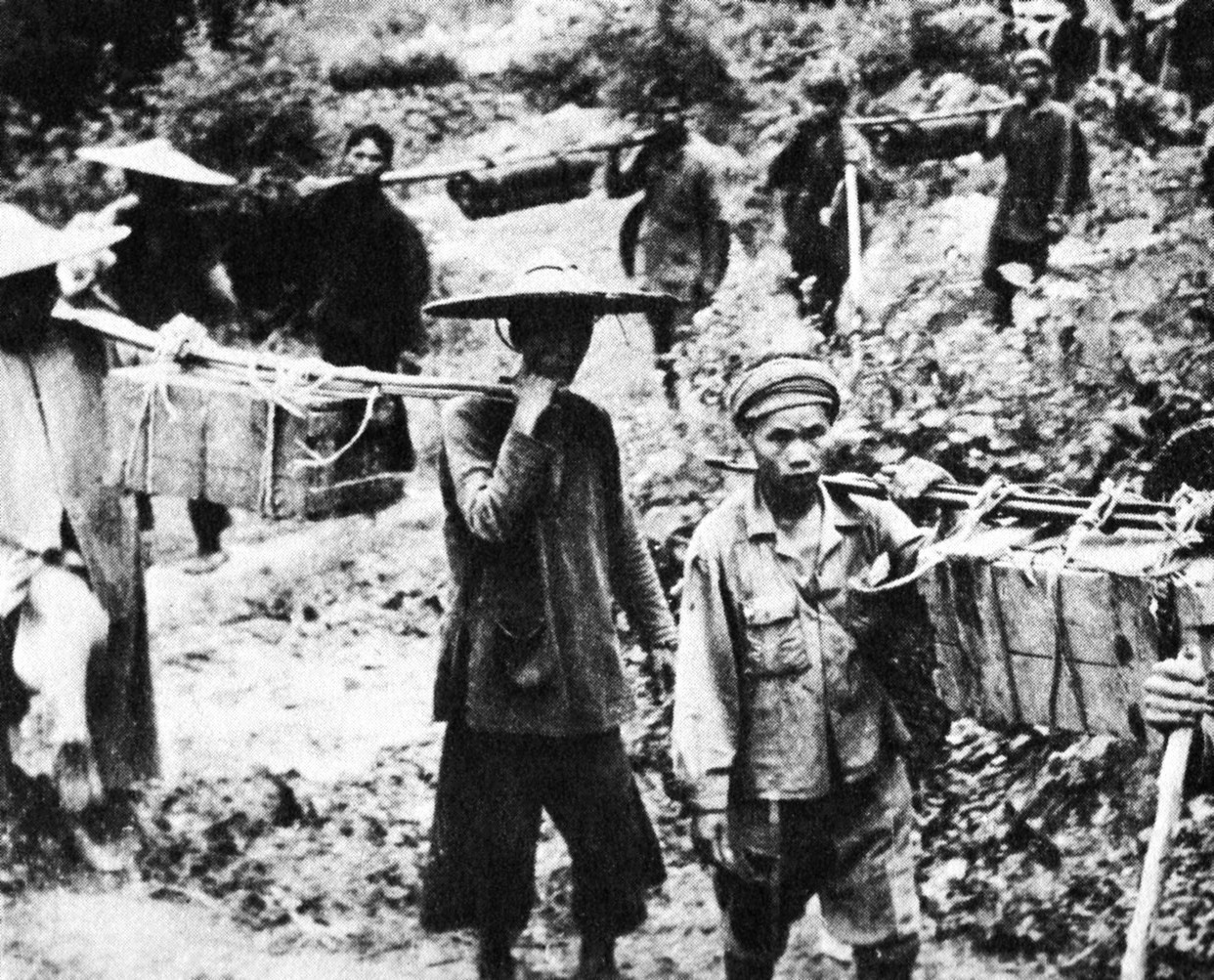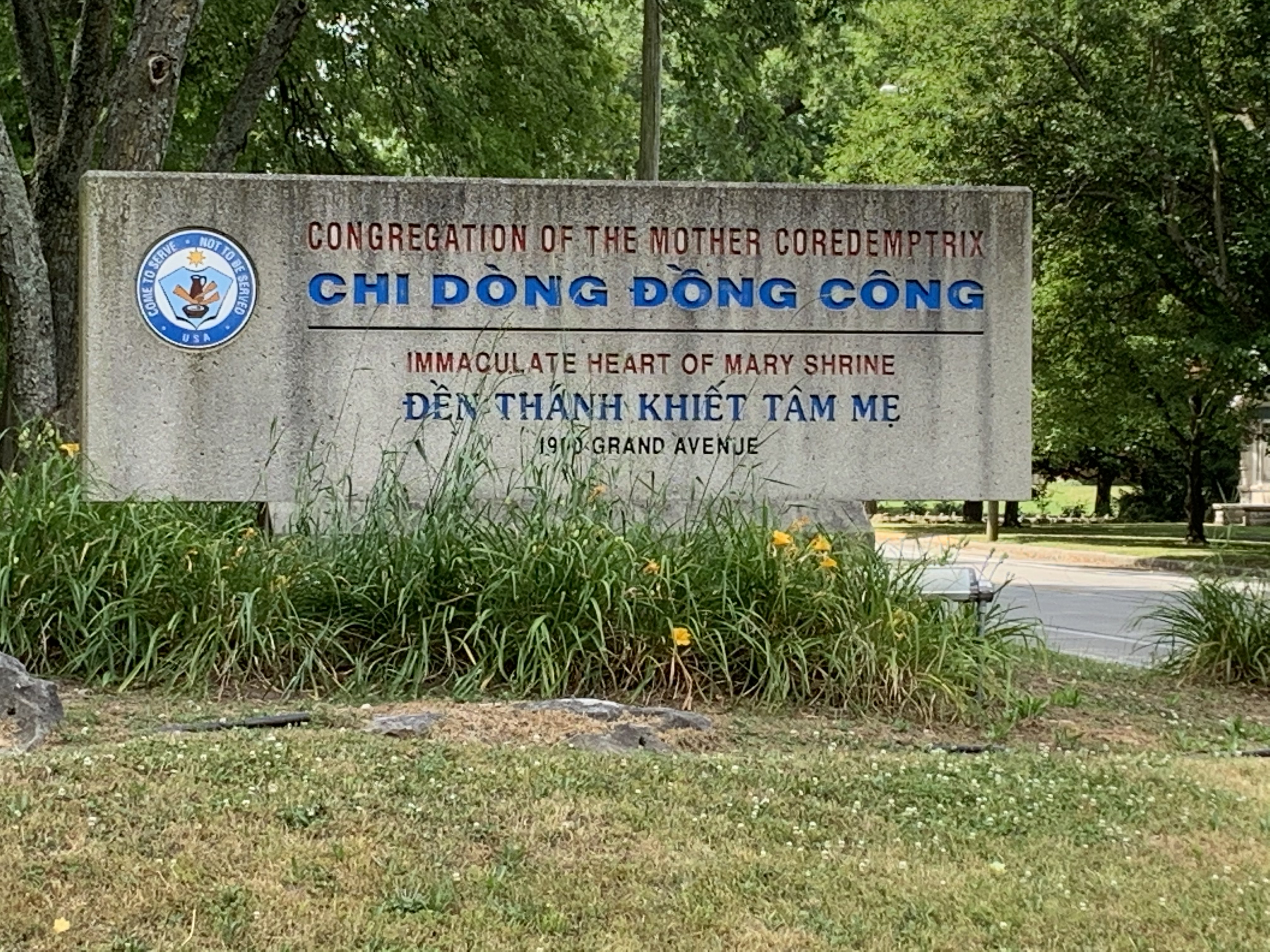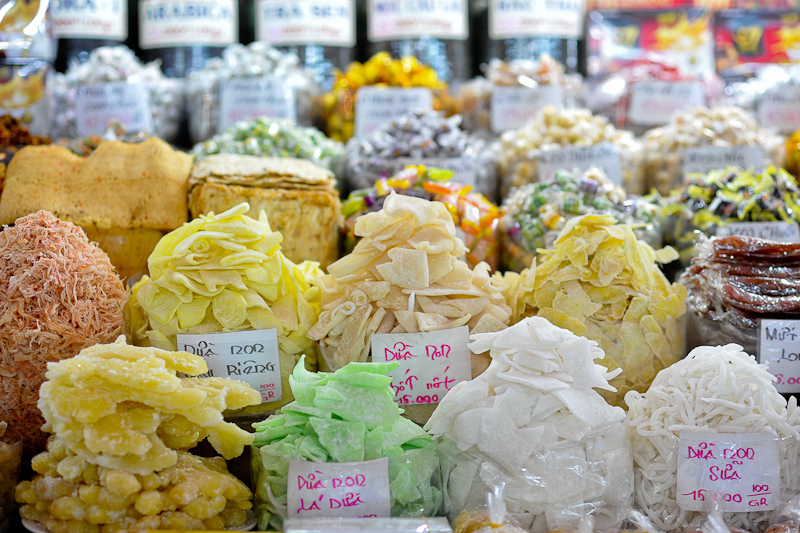|
ĂĄo DĂ i
(; , ) is a modernized Vietnamese national garment consisting of a long split tunic worn over silk trousers. It can serve as formalwear for both men and women. translates as shirt' is derived from a Middle Chinese word () meaning "padded coat". and means "long".Phan Van Giuong, ''Tuttle Compact Vietnamese Dictionary: VietnameseâEnglish EnglishâVietnamese'' (2008), p. 76. "dĂ i ''adj.'' long, lengthy." The term can also be used to describe any clothing attire that consists of a long tunic, such as . There are inconsistencies in usage of the term . The currently most common usage is for a Francized design by (whose shop was named "Le Mur"), which is expressly a women's close-fitting design whose shirt is two pieces of cloth sewn together and fastened with buttons. A more specific term for this design would be " Le Mur". Other writers, especially those who claim its "traditionality", use as a general category of garments for both men and women, and include older de ... [...More Info...] [...Related Items...] OR: [Wikipedia] [Google] [Baidu] |
Nguyá»
n Lords
The Nguyá» n lords (, äž»éź; 1558â1777, 1780â1802), also known as the Nguyá» n clan (; ), were Nguyá» n dynasty's forerunner and a feudal noble clan ruling southern ÄáșĄi Viá»t in the Revival LĂȘ dynasty. The Nguyá» n lords were members of the House of Nguyá» n PhĂșc. The territory they ruled was known contemporarily as ÄĂ ng Trong (Inner Realm) and known by Europeans as the Kingdom of Cochinchina and as Kingdom of QuáșŁng Nam (; ) by Imperial China, in opposition to the Trá»nh lords ruling northern ÄáșĄi Viá»t as ÄĂ ng NgoĂ i (Outer Realm), known as the "Kingdom of Tonkin" by Europeans and "Kingdom of Annam" (; ) by Imperial China in bilateral diplomacy. They were officially entitled, in Sino-Vietnamese, the ' () in 1744 when lord Nguyá» n PhĂșc KhoĂĄt self-proclaimed himself to elevate his status equally to Trá»nh lords's title known as the ' (; ). Both Nguyá» n and Trá»nh clans were ''de jure'' subordinates and fief of the LĂȘ dynasty. However, the ''d ... [...More Info...] [...Related Items...] OR: [Wikipedia] [Google] [Baidu] |
KhÄn Váș„n
KhÄn váș„n (Chữ NĂŽm: ć·Ÿć), khÄn ÄĂłng (Chữ NĂŽm: ć·Ÿăš) or khÄn xáșżp (Chữ NĂŽm: ć·Ÿæ), is a kind of turban worn by Vietnamese people which became popular beginning with the reign of the Nguyá» n lords. The word ''váș„n'' means ''coil around''. The word ''khÄn'' means cloth, towel or scarf. History After the Trá»nhâNguyá» n War, Trá»nh-Nguyá» n war, the residents in ÄĂ ng Trong, QuáșŁng Nam (Canglan â the Southern) began to adapt to some customs of Champa, one of those was "váș„n khÄn" â wrap the scarf around head. The Nguyen Lords introduced ĂĄo ngĆ© thĂąn, the predecessor of the modern ĂĄo dĂ i. In 1744, Lord Nguyá» n PhĂșc KhoĂĄt of ÄĂ ng Trong (Huáșż) decreed that both men and women in his court wear trousers and a gown with buttons down the front. The members of the ÄĂ ng Trong court (southern court) were thus distinguished from the courtiers of the Trá»nh Lords in ÄĂ ng NgoĂ i (Hanoi), who wore ''ĂĄo giao lÄ©nh'' with long skirts an ... [...More Info...] [...Related Items...] OR: [Wikipedia] [Google] [Baidu] |
NĂłn LĂĄ
NĂłn lĂĄ (; ) or nĂłn tÆĄi () is a type of Vietnam, Vietnamese headwear used to shield the face from the sun and rain. It is a common name for many types of hats in Vietnam, but now it is mainly used to refer to Cone, cones with pointed tips. The hats have been worn since ancient times to protect the wearer from the sunshine and rain of Vietnam's tropical monsoon climate. There were no archaeological evidence for an ancient origin of Vietnamese nĂłn lĂĄ, although the hat itself is widespread across many Asian societies and was often associated with the peasantry. The recent and typical design of the non la was highly modeled after the coolies hat worn by Chinese laborers in British Malaya during the late 19th century. In Vietnam today, there are a number of traditional hat-making villages, including Äá»ng Di (PhĂș Vang district, PhĂș Vang), DáșĄ LĂȘ (HÆ°ÆĄng Thủy), TrÆ°á»ng Giang (NĂŽng Cá»ng), Phủ Cam (Huáșż), and ChuĂŽng (Thanh Oai - Hanoi). Characteristics NĂłn ... [...More Info...] [...Related Items...] OR: [Wikipedia] [Google] [Baidu] |
Vietcong
The Viet Cong (VC) was an epithet and umbrella term to refer to the Communism, communist-driven armed movement and united front organization in South Vietnam. It was formally organized as and led by the National Liberation Front of South Vietnam, and conducted military operations under the name of the Liberation Army of South Vietnam (LASV). The movement fought under the direction of North Vietnam against the South Vietnamese and United States governments during the Vietnam War. The organization had both guerrilla warfare, guerrilla and regular army units, as well as a network of Professional revolutionaries, cadres who organized and mobilized peasants in the territory the VC controlled. During the war, communist fighters and some Anti-war movement, anti-war activists claimed that the VC was an insurgency indigenous to the South that represented the legitimate rights of people in South Vietnam, while the U.S. and South Vietnamese governments portrayed the group as a tool of N ... [...More Info...] [...Related Items...] OR: [Wikipedia] [Google] [Baidu] |
Vietminh
The Viá»t Minh (, ) is the common and abbreviated name of the League for Independence of Vietnam ( or , ; ), which was a communist-led national independence coalition formed at PĂĄc BĂł by Há» ChĂ Minh on 19 May 1941. Also known as the Viá»t Minh Front (), it was created by the Indochinese Communist Party (ICP) as a united front to achieve the independence of the Democratic Republic of Vietnam. The was previously formed by Há» Há»c LĂŁm in Nanjing, China, at some point between August 1935 and early 1936, when Vietnamese nationalist parties formed an anti-imperialist united front. This organization soon lapsed into inactivity, only to be taken over by Há» ChĂ Minh and the ICP in 1941. They presented the organization as inclusive of political groups, with a founding charter more nationalist than communist. It exhorted "soldiers, workers, peasants, intellectuals, civil servants, merchants, young men and women" to overthrow "French jackals" and "Japanese fascists", whi ... [...More Info...] [...Related Items...] OR: [Wikipedia] [Google] [Baidu] |
Overseas Vietnamese
Overseas Vietnamese (, , or ) refers to the Vietnamese diaspora living outside of Vietnam. The global overseas Vietnamese population is estimated at 5 to 6 million people. The largest communities are in the United States, with over 2.3 million Vietnamese Americans, alongside significant populations in Vietnamese people in France, France, Vietnamese Australians, Australia, and Vietnamese people in Germany, Germany. Smaller but historically important communities are also found in Southeast Asia, particularly in Vietnamese Cambodians, Cambodia. The Vietnamese diaspora emerged through several major waves of migration. Early migration occurred during the French Indochina, French colonial period in the late 19th and early 20th centuries, followed by large-scale refugee exodus after the Vietnam War in 1975. In later decades, the diaspora grew further through family reunification, economic migration, and educational opportunities. Overseas Vietnamese continue to maintain strong cult ... [...More Info...] [...Related Items...] OR: [Wikipedia] [Google] [Baidu] |
ĂĄo Gáș„m
The ''ĂĄo gáș„m'' () is a modified ĂĄo dĂ i made with thicker fabric, and is a traditional brocade tunic for men. It is more elaborate than the formal "ĂĄo the", a similar men's tunic. These tunics are often worn at ceremonies, birthdays, festivals and other circumstances where the women wear an expensive ĂĄo dĂ i.Vietnamese traditional âAo Daiâ enchants Seoul audience "On Tet and other occasions, Vietnamese men may wear an ĂĄo gáș„m (brocade robe), a version of the ao dai made of thicker fabric.", Hanoi Times, Sep 01, 2017 The word gáș„m on its own means brocade hence "brocade tunic". The elegance of the brocade tunic is proverbial, as per the Vietnamese saying ''ĂĄo gáș„m Äi ÄĂȘm'' ("a brocade tunic going in the dark"), meaning that some ... [...More Info...] [...Related Items...] OR: [Wikipedia] [Google] [Baidu] |
Táșżt
Táșżt (, ), short for (; ), is the most important celebration in Vietnamese culture. Táșżt celebrates the arrival of spring based on the Vietnamese calendar and usually falls on January or February in the Gregorian calendar. is not to be confused with Táșżt Trung Thu, which is also known as Children's Festival in Vietnam. "'" itself only means festival but it would generally refer to the Lunar New Year in Vietnamese, as it is often seen as the most important festival amongst the Vietnamese and the Vietnamese diaspora, with regarded as the second-most important. Vietnamese people celebrate annually, which is based on a lunisolar calendar (calculating both the motions of Earth around the Sun and of the Moon around Earth). Táșżt is generally celebrated on the same day as Chinese New Year (also called Spring Festival), with the one-hour time difference between Vietnam and China resulting in the new moon occurring on different days. Rarely, the dates of Vietnamese and Chine ... [...More Info...] [...Related Items...] OR: [Wikipedia] [Google] [Baidu] |
South Vietnam
South Vietnam, officially the Republic of Vietnam (RVN; , VNCH), was a country in Southeast Asia that existed from 1955 to 1975. It first garnered Diplomatic recognition, international recognition in 1949 as the State of Vietnam within the French Union, with its capital at Saigon, before becoming a republic in 1955, when the southern half of Vietnam was a member of the Western Bloc during part of the Cold War after the 1954 Geneva Conference, 1954 division of Vietnam. South Vietnam was bordered by North Vietnam (Democratic Republic of Vietnam) to the north, Kingdom of Laos, Laos to the northwest, Khmer Republic, Cambodia to the southwest, and Thailand across the Gulf of Thailand to the southwest. Its sovereignty was recognized by the United States and 87 other nations, though it failed to gain admission into the United Nations as a result of a Soviet Union, Soviet veto in 1957. It was succeeded by the Provisional Revolutionary Government of the Republic of South Vietnam, Rep ... [...More Info...] [...Related Items...] OR: [Wikipedia] [Google] [Baidu] |
Women In Vietnam
The role of women in Vietnam was subject to many changes throughout the history of Vietnam. They have taken on varying roles in society, and the country has seen a number of advances in women's rights, such as an increase in female representation in government, as well as the creation of the Vietnam Women's Union in 1930. The role of women in warfare and outside the home continued to increase throughout the 20th century, especially during the Indochina Wars. During and after the Vietnam War, the ruling Communist Party of Vietnam made efforts to increase women's rights, equity, and representation in government. This included the creation of job quotas during the 1960s, which required that women occupy a certain percentage of jobs in different sectors. Women's rights have continued to increase in contemporary Vietnam, and women have increasingly held leadership positions. Vietnam has one of the highest female labour-force participation rates in the world and ranked the second most ... [...More Info...] [...Related Items...] OR: [Wikipedia] [Google] [Baidu] |






